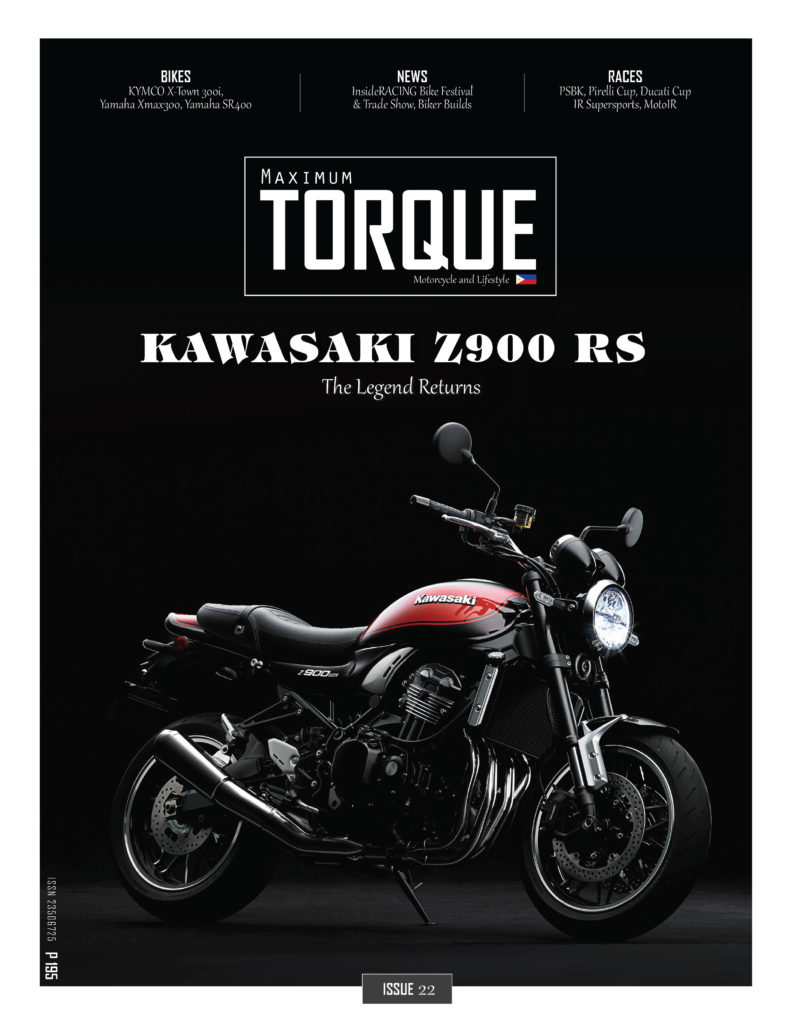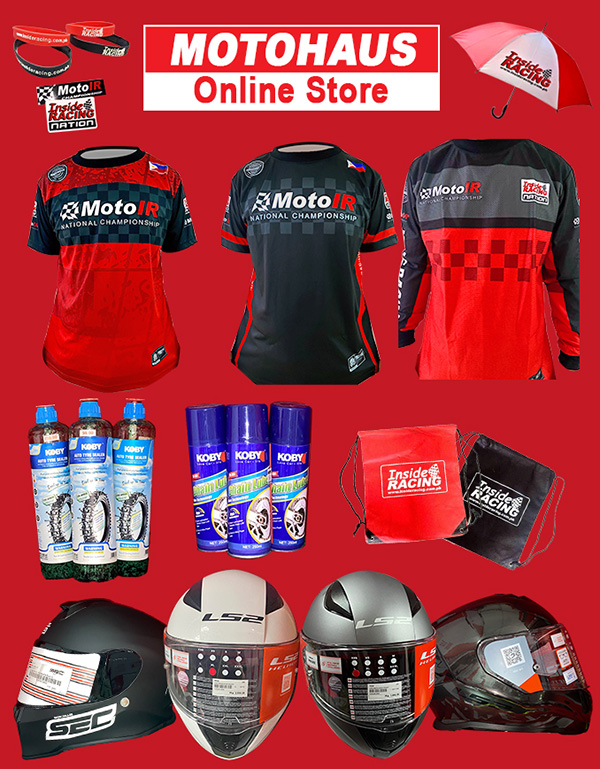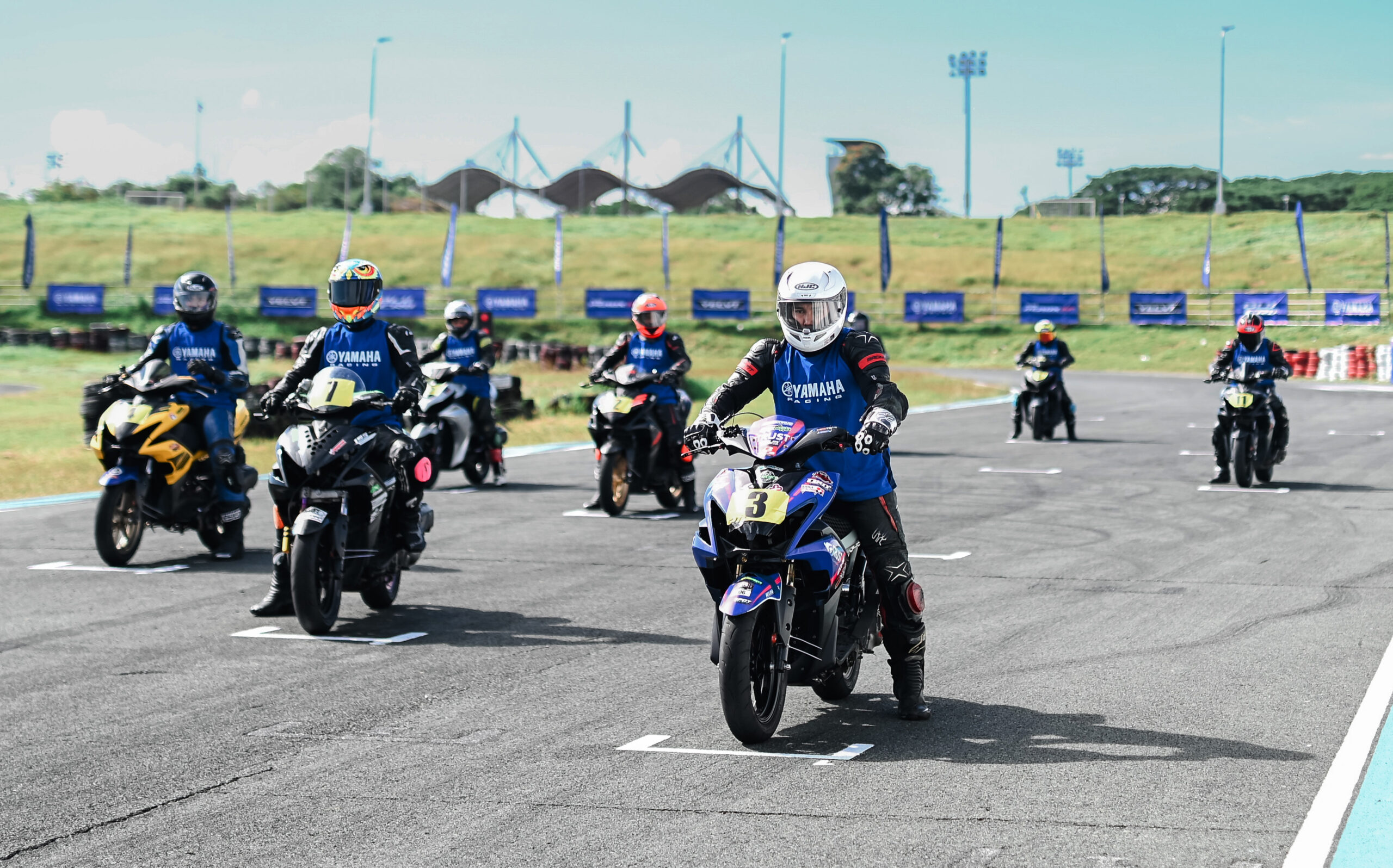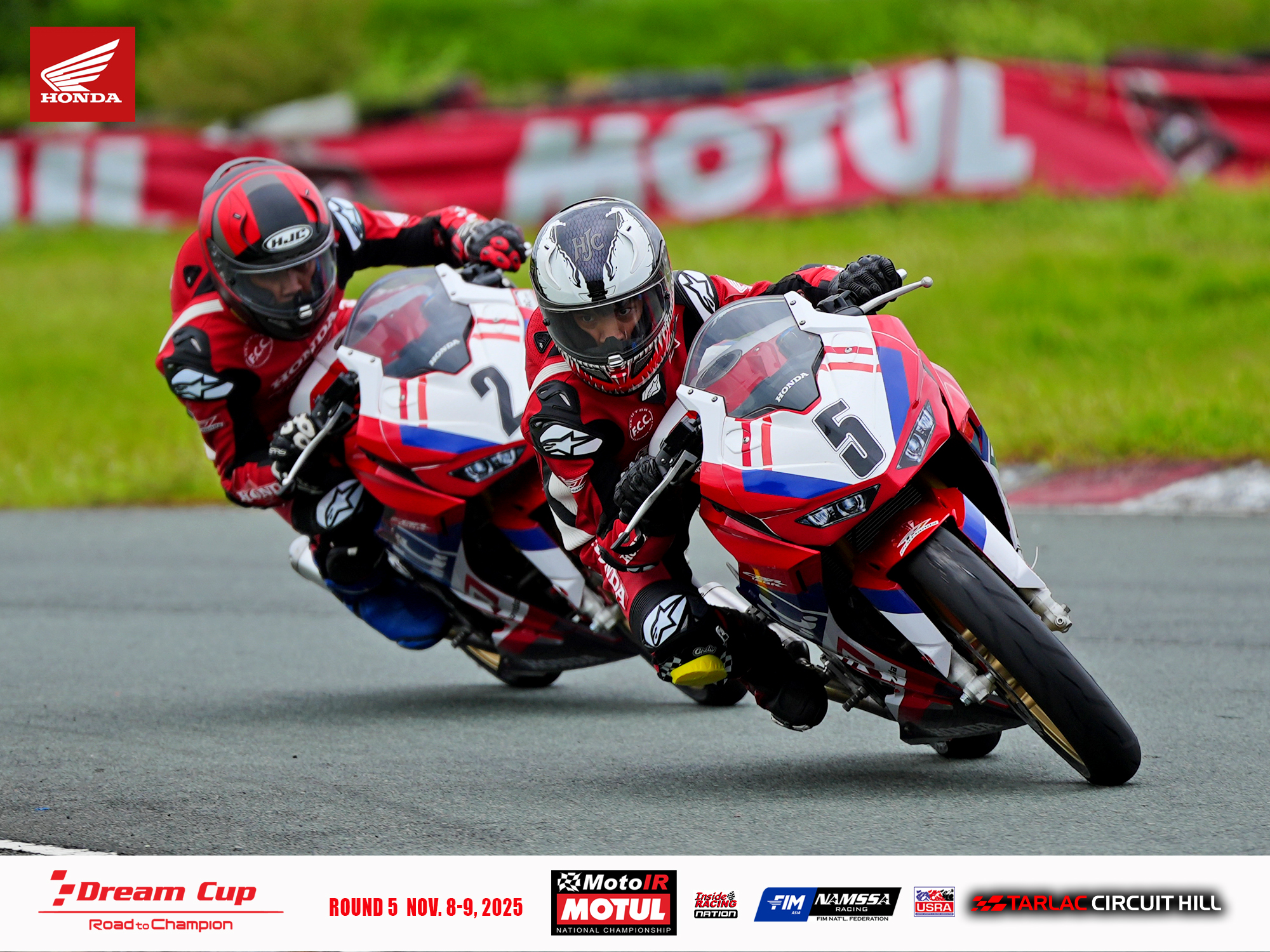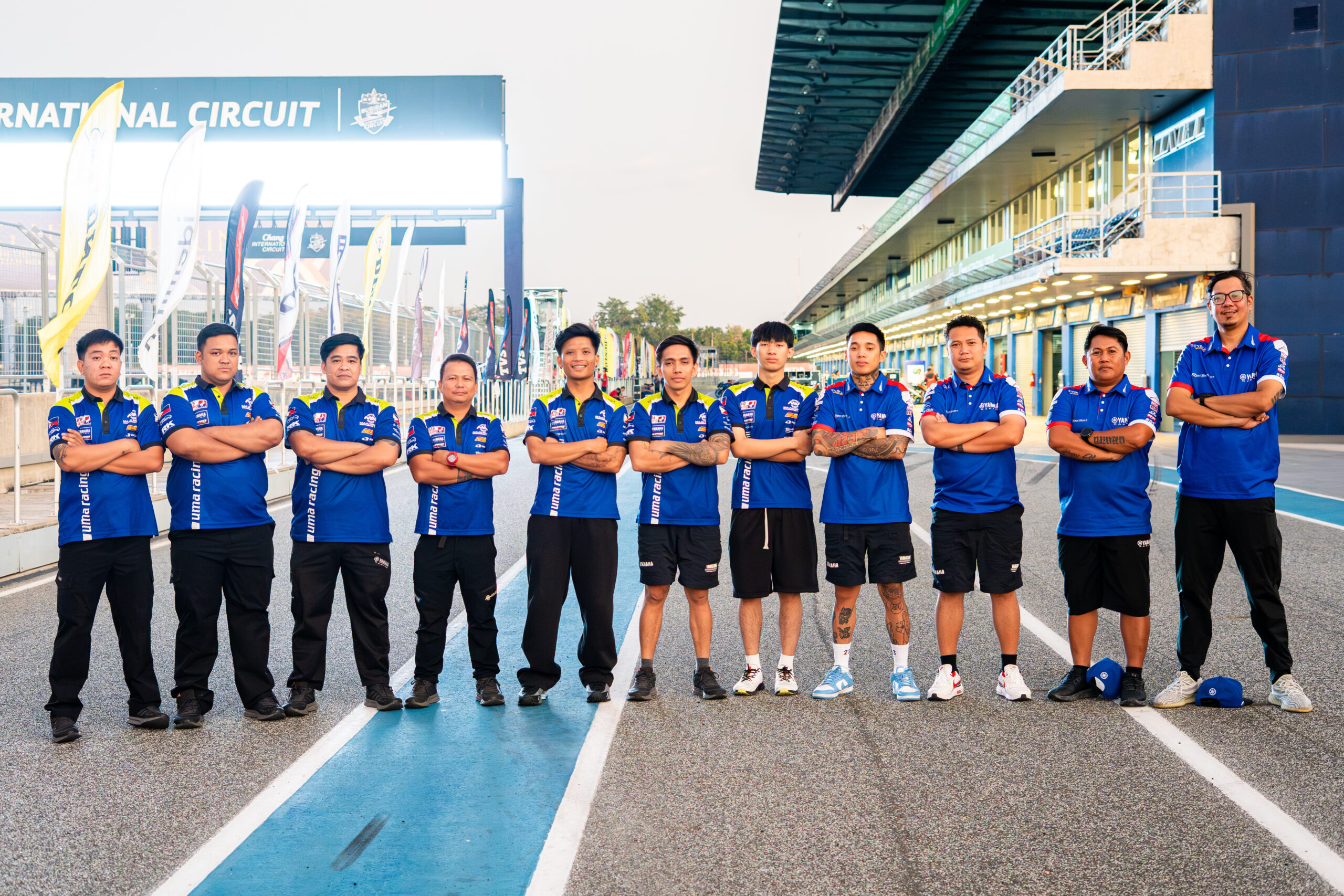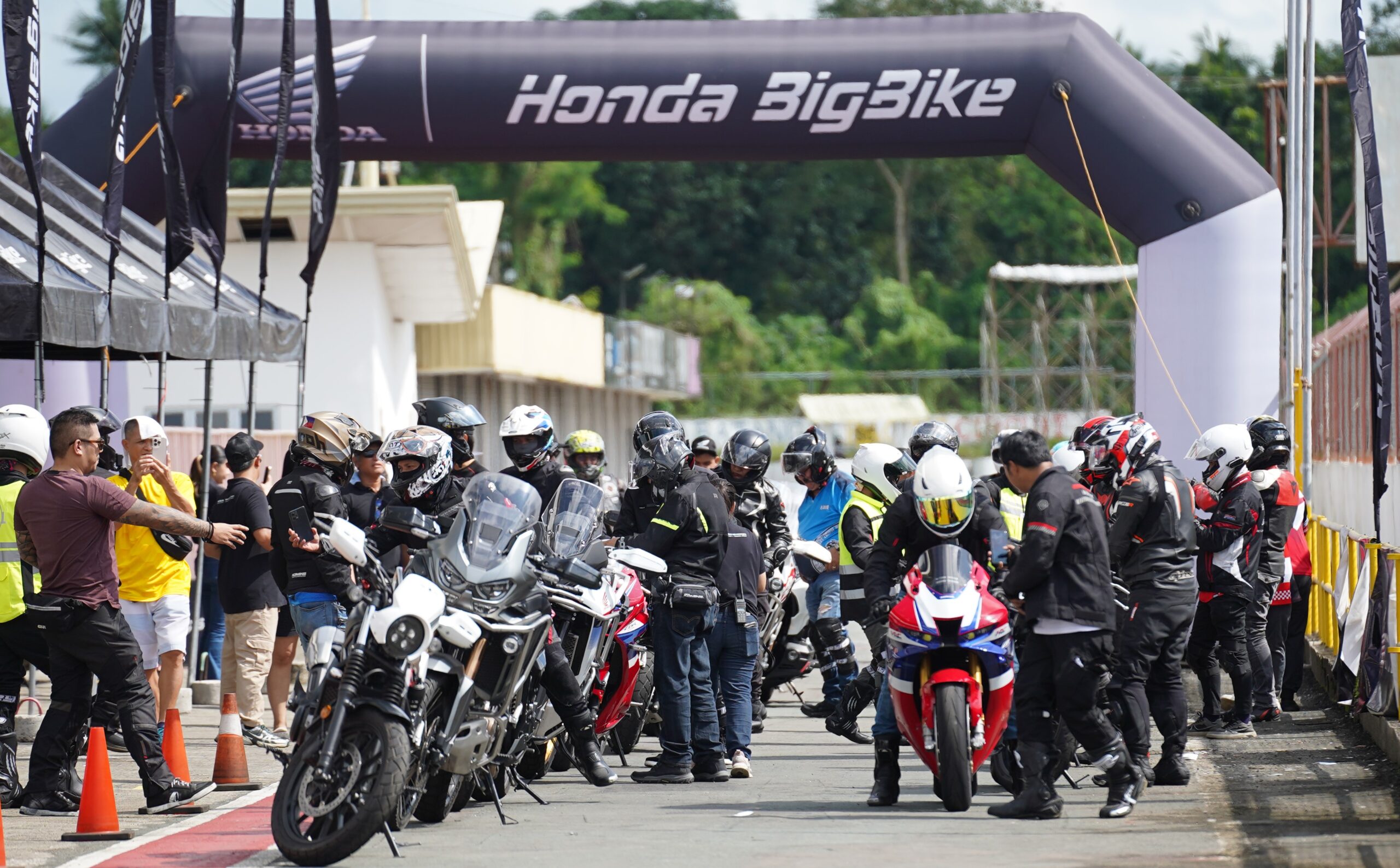Kawasaki Z900 First Ride Review – Back to the ‘70s with this Modern Retro
Share this
The Kawasaki Z1 was the Japanese brand’s bet in the 70’s era of motorcycles when it came to the superbike segment. They have also made instant classics out of the W800 line-up, including the Zephyr up to the early 2000’s. Then came the more recent Z900, and now its close sibling, the Z900RS. The Z900RS is equipped with a 948cc, 4-cylinder, DOHC, liquid-cooled, fuel-injected engine. It is a near liter bike at 948cc so exercise caution when twisting the throttle, it is powerful. And with that retro feel of not having any power mode selection, all of the 110 horses are at the palm of your right hand at any given time. The Z900, its brother, has a different take in terms of being relaxed at low gears but the RS is calm and while the bike is powerful, you won’t feel any jerkiness at low speed due to its good build and handling. This is also in part due to the Z900RS having a smaller diameter exhaust and lower compression.
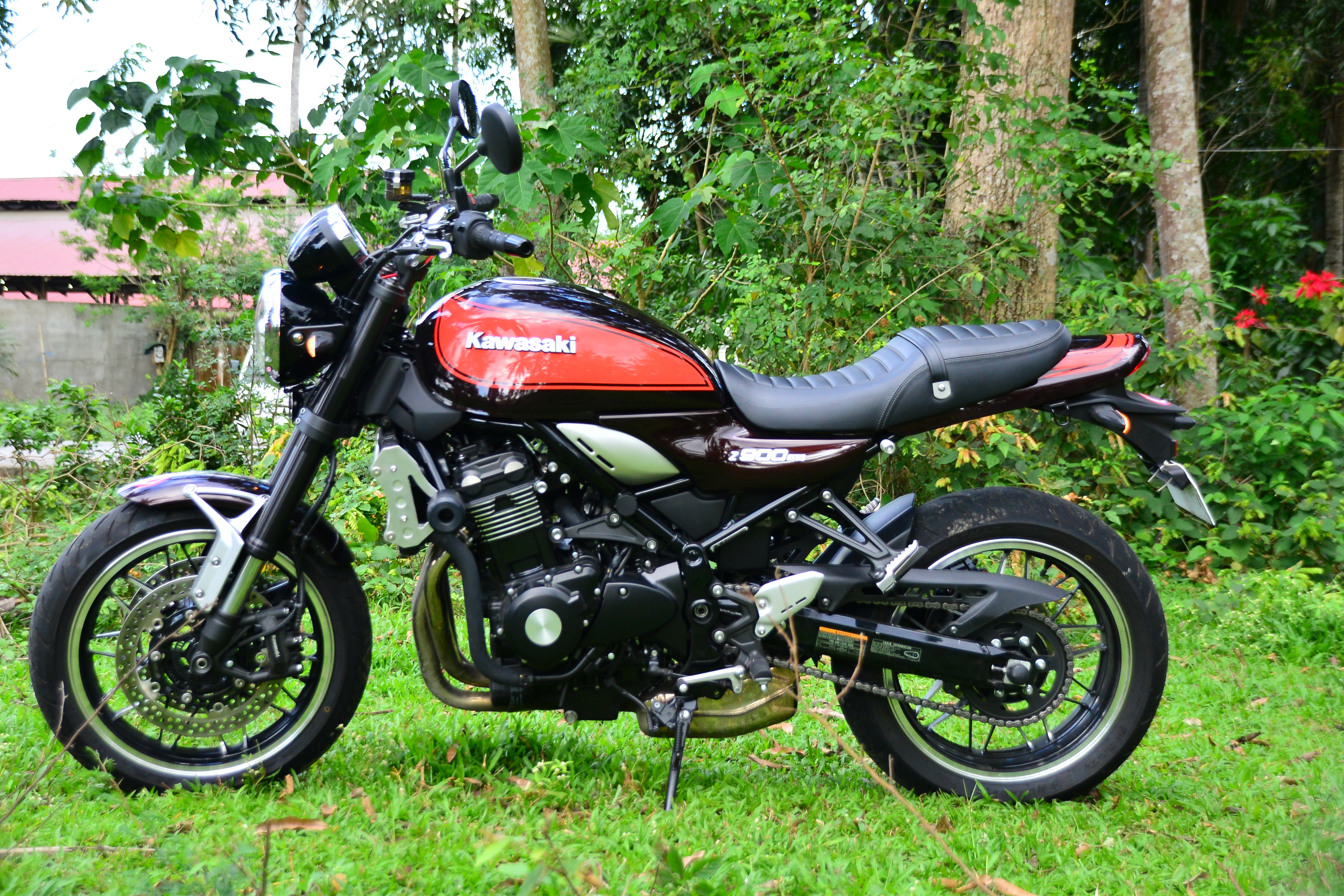
Lightweight Chassis Complementing a light overall weight is a rigid frame and chassis geometry which were selected to deliver light, natural handling. Its frame design trims all unnecessary material, resulting in an extremely lightweight frame
The whole experience makes this a totally different machine. Peak torque is rated at 72.6 lb/ft at 6,500 rpm while peak power is at 8,500 rpm. One thing you’ll instantly notice is that there is a lot of torque upon opening the throttle. The bike, with its tuning on the low gears understandably, will feel powerful in first gear. The bike will need just a tiny bit of getting used to for the new user to be able to fully adjust to the output given out by a small twist of the throttle lest you would want to have the throttle turned off in mid-corner. You’ll be fully adjusted in no time. While the engine’s strong point is at the low gears, there is a fair amount of top-end from this bike since it is an inline-four, with loads of power up to the 10,000 rpm redline. This setup of a shortened first gear and a lengthened top gear reduces vibrations at high speeds. The bike’s power is linear none the less and will not surprise you. Goody.
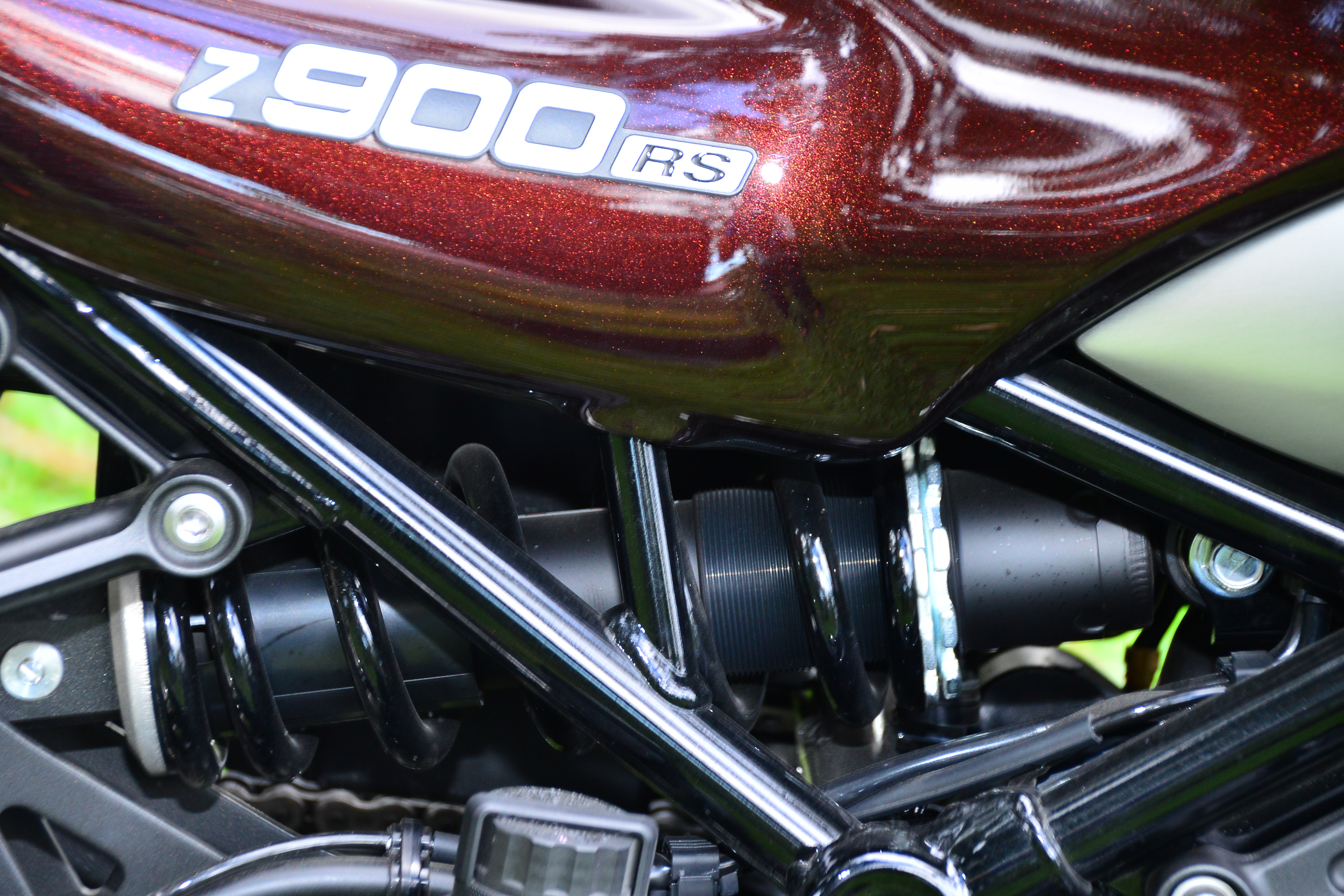
HORIZONTAL BACK-LINK SUSPENSION – The Z900RS features a Horizontal Back-Link Rear Suspension, offering a higher level of riding potential. It features stepless rebound damping and stepless preload adjustability
The bike handles good. The 472 lb wet weight is all worth it. The monoshock suspension, right way forks, and single exhaust baffled us at the beginning considering this is supposed to be a modern retro but after riding it just a few kilometers, we already knew the answer. These give the rider the luxury of riding this bike with relative ease and almost perfect comfort in smooth roads. You may adjust it as you please as the 41mm USD forks are adjustable, along with the monoshock for preload and damping.
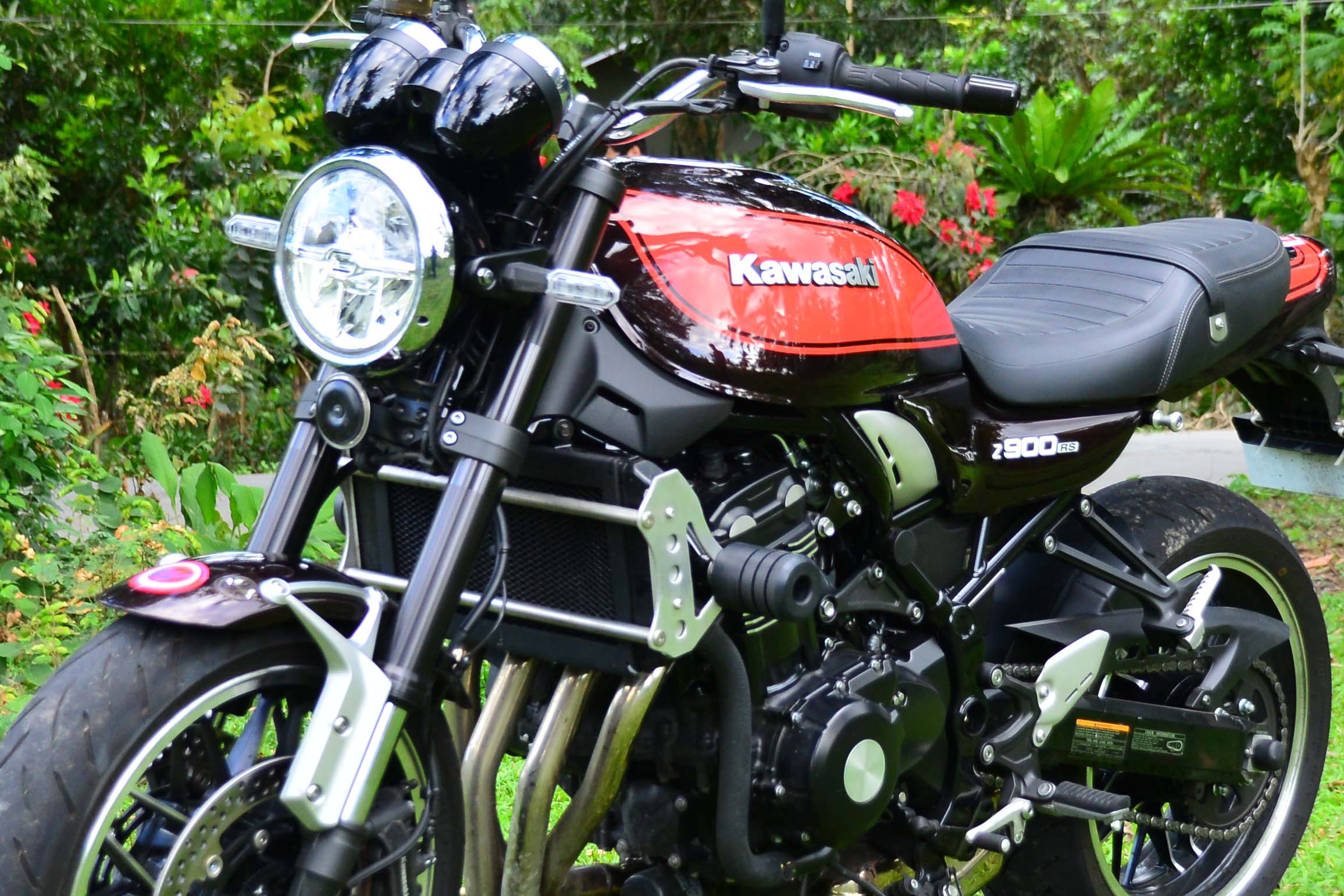
INVERTED FRONT FORK – The 41mm inverted front fork contributes to excellent ride comfort and sporty riding potential.
We’ve tried riding this for a not so quick Laguna Loop and we were able to attack the curves great with the Z900RS, without the weight and looks of the bike being intimidating as this bike runs as light as any bike when it is in motion. We have no complaints and are all praises about the brakes. The dual 300mm front and single 220mm rear radial mounted brakes gave excellent control of the bike and modulating the front brake with your fingers is easy and smooth – no sudden bites even if you are riding the machine for the first time. The ABS performs the job – giving us confidence during those emergency situations or even when the pavement is wet. The bike is also equipped with Kawasaki’s Traction Control or KTRC. It has actually three modes including the off function.
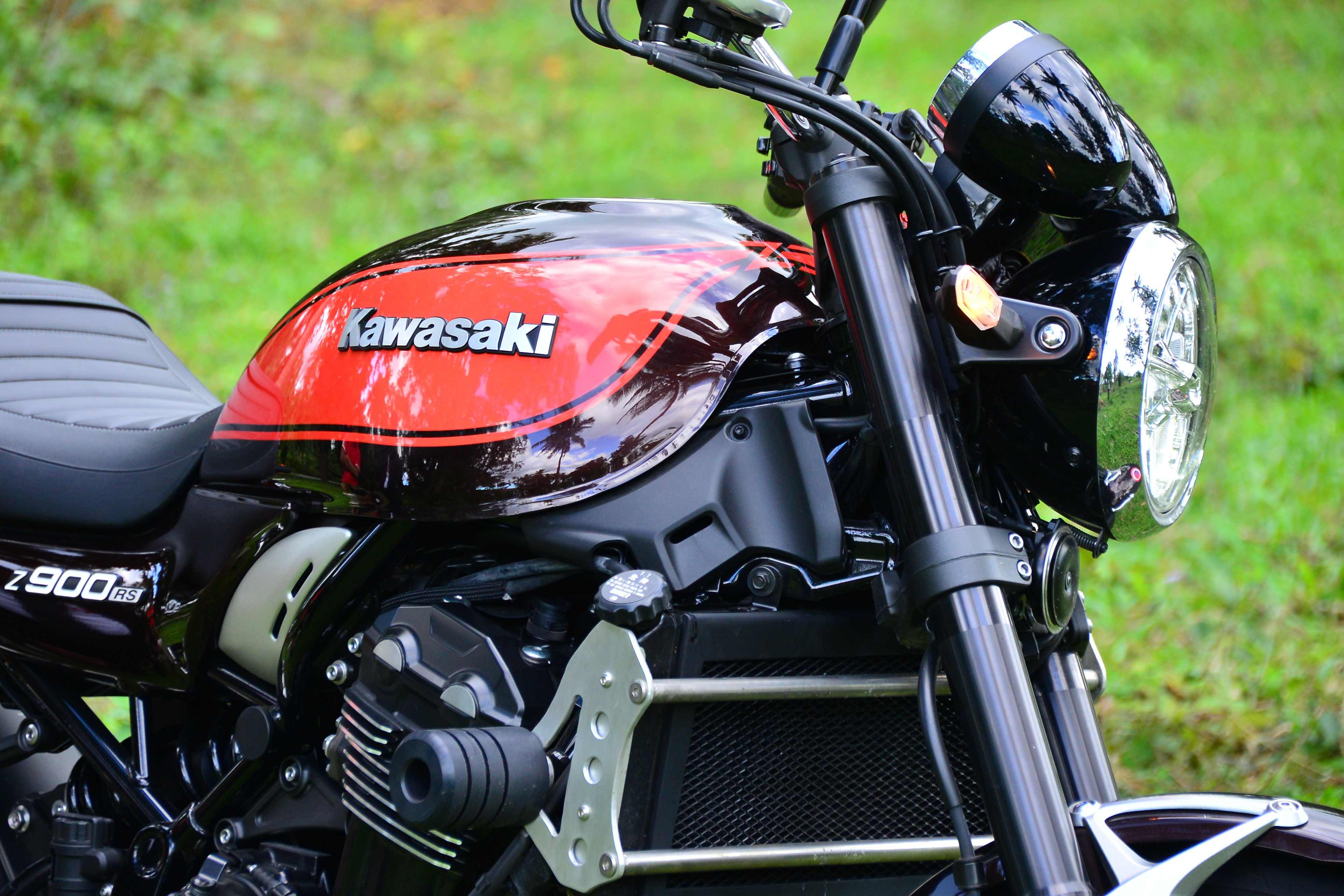
RETRO STYLING – The new Z900RS awakens the classic beauty of the original Z1 900. In this throwback to the Golden Age of motorcycling, Kawasaki calls upon timeless design elements with minimal bodywork and no fairing for a pure retro-style look. Machined spoke mag wheels and retro paint scheme on the iconic teardrop fuel tank complete the classic appearance of the Z900RS.
This is particularly advantageous in terms of safety as the bike corrects excessive wheel spin thus reducing the risk of losing control of the bike or fishtailing. The assist and slipper clutch too is a welcome feature – remember when we mentioned that the bike performs well in cornering? Now downshifting when approaching turns will be a lot safer with this. By the way, you could use the stock 180/55×17 and 120/70×17 tires until it wears out for both your canyon carving and city riding in traffic. Riding the bike entails enjoying all that power and style in a relaxed position. This also means less stress when doing long rides. To further enhance your long distance riding experience, we suggest to possibly have the stock seat changed to a softer one. Our main test ride guy is 5 feet and 9 inches tall, and the 31.5-inch seat height proved no problem with both feet firmly planted on the ground.
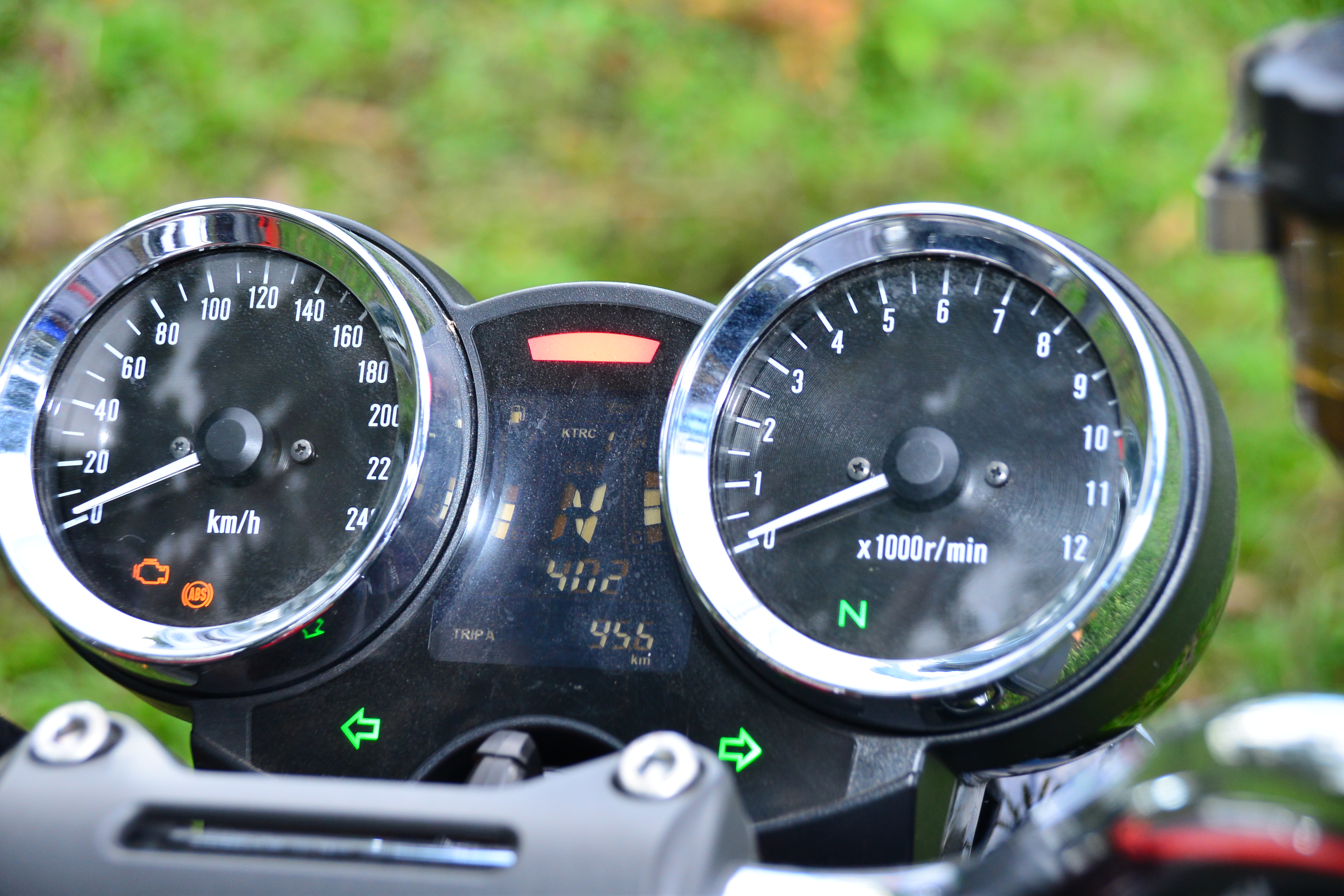
MODERN FEATURES – The look says 1973, but the technology of the Z900RS brings modern comfort and sport performance to this new retro standard. The multi-function LCD appears along with dual analog dials. Responsive ABS brakes and LED lights bring modern-day ergonomic elements to your ride.
Of course we have to talk about the style and the feeling when you are riding a classic-looking motorcycle. The dual analog round gauges add to the old school feel of the bike. Well that’s not all there is to it, there is a small digital gauge in between, giving us at the same time a hint of modernity as it displays the gear indicator and average consumption of the bike (which is about 17 kilometers per liter for our long test ride). The round side mirrors also complement the overall look of the bike. The exhaust sound on this 4-cylinder bike gives you a bit of a grunt on startup, but not too loud and up to the time we turned the bike off, everything was great, making it a legit UJM. The paint finish on the bike (as you could see in the pictures in this article) showed a whole lot of details and was a thing of beauty, as it was one of the finer things we noticed on the bike, looking at it over and over again.
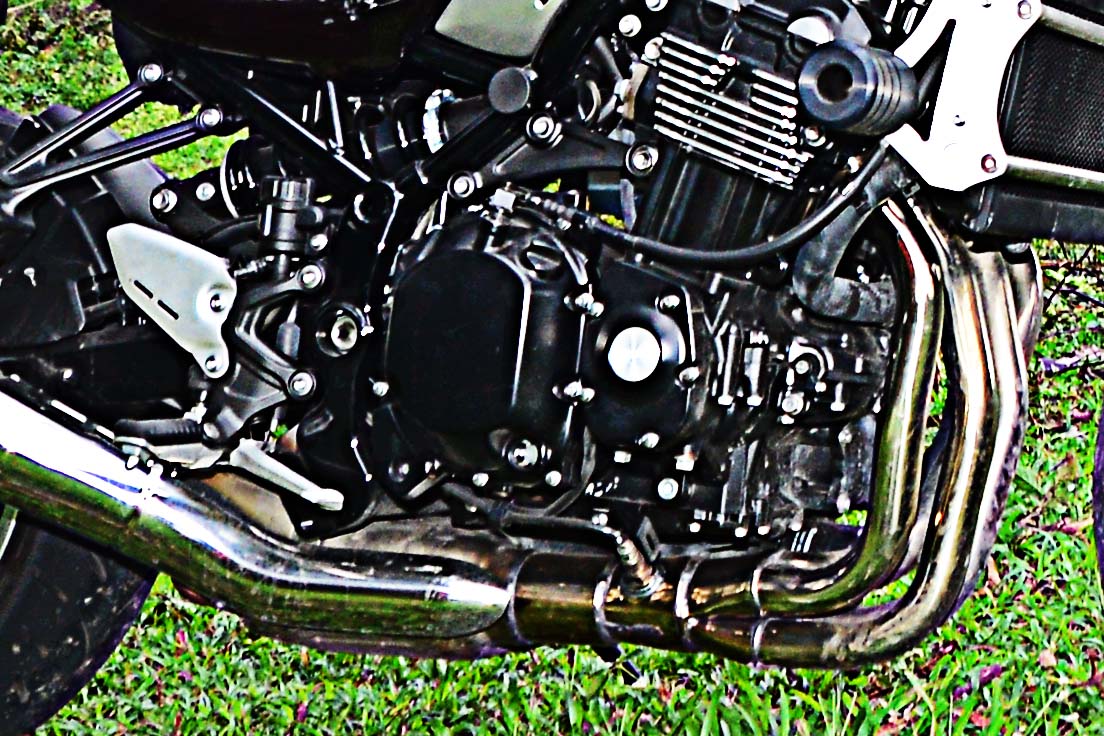
POWER & PERFORMANCE – At the heart of every sport muscle bike lies a potent powerhouse, and the Kawasaki Z900RS motorcycle is no exception. The raw sound of the smooth-revving 948cc inline four-cylinder engine will stir your soul, while the aggressive sport performance begs to be ridden harder. A strong low- to mid-range pull for brisk roll-on power and acceleration add up to pure street riding enjoyment.
The Z900RS could appeal to a very wide age gap as it does maintain that certain appeal that transcends certain demographics. You won’t get the full retro feel but that is complemented by the modern styling incorporated inside and out of the bike. Get it? The cast aluminum wheels (instead of spooked) and beautifully large 17L fuel tank give us a hint of modernity. And so does the rounded headlight with several LED bulbs inside. Look, while the bike is marketed as a retro bike, this bike could very well stand on its own. It’s got its own character.
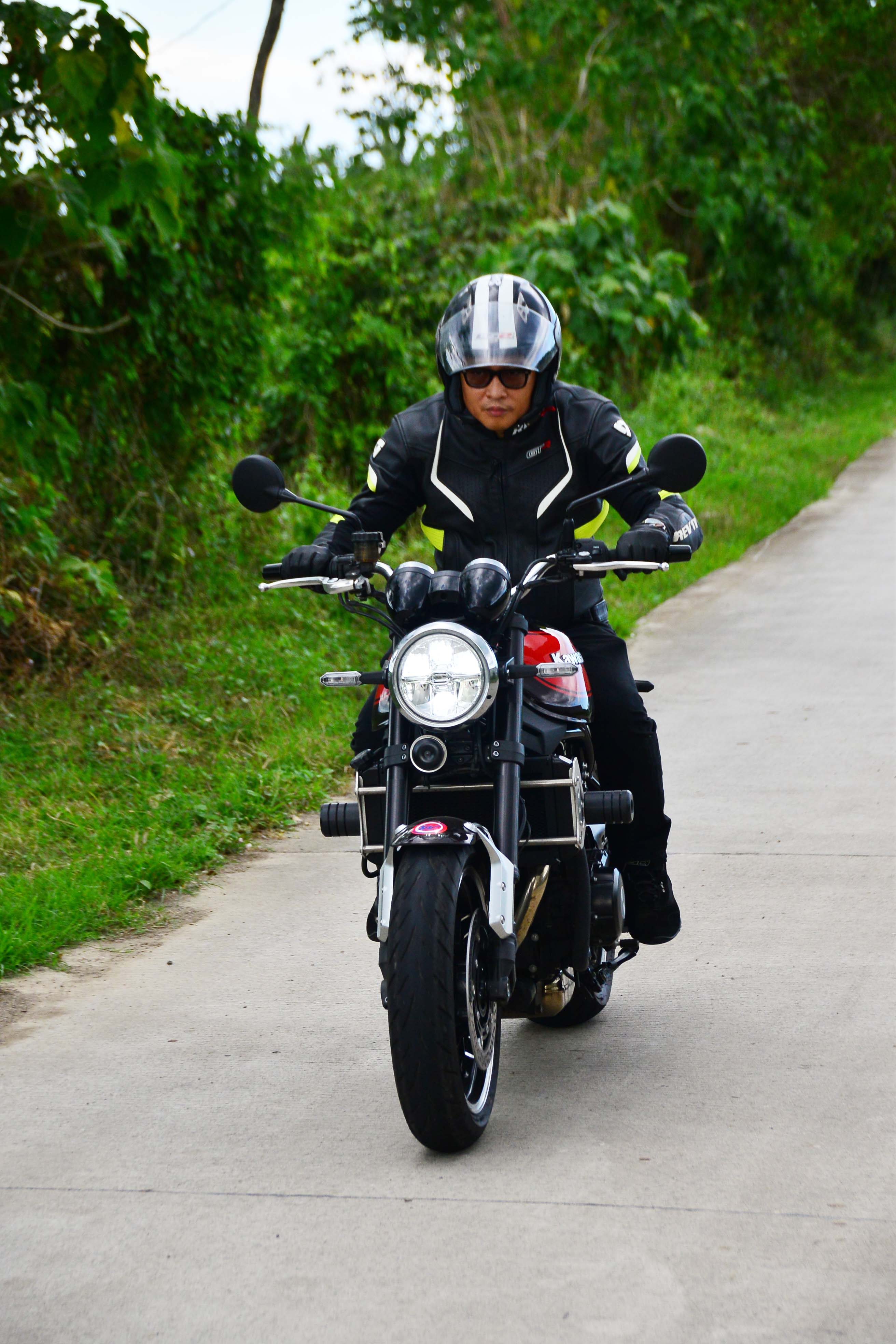
Al Camba “I’m glad that Kawasaki introduced their own retro-styled big bike. Kawasaki is the latest brand to join this. I’ve ridden other retro bikes and the Z900RS is not as light as the Ducati and it’s also not as heavy as the BMW but the handling feels light. It appears very big especially if you focus on the big tank. It looks like a big motorcycle but when you ride it, it feels small. Handling is quite light, para ka lang naka 400cc. Within a minute of riding it, you will get immediately comfortable. For me, the slipper clutch effort is very light. The handlebar is very wide and the position is relaxed. The engine is 4-cylinder similar to the naked Z1000 of Kawasaki. It’s liquid-cooled just like the Triumph. It looks nice! The black and the stainless silver aluminum combination makes it more premium and expensive. I like the analog speedometer and tachometer. I’ve read that the front is actually the same as the original Z900. Although this is a retro-styled bike, it’s completely modern and has fuel injection, hydraulic disc brakes at the front and rear and it has ABS. Well, honestly, on driving on roads and city between one and two you wouldn’t really notice it unless you are really pushing it but with this kind of bike… I doubt that you will push it, whatever setting you have, maybe in the rain. If you’re a fan of an inline-4 but you’re not into sportbikes anymore and you still want to feel that linear acceleration and that fantastic cap end of an inline-4 and you want a retro bike, this is the bike for you. The rims actually are aluminum but are styled to look like wire wheels. It has stainless steel single pipe…very retro. For the price it’s very nice! It is still modern in terms of function. It has EFI, traction control, ABS and Slipper Clutch. That’s why even in heavy traffic, hindi ako napagod. And I think this is one of the biggest consideration when buying this bike and if you plan to ride this on a daily basis, magaan ang clutch effort, hindi ka tatamarin gamitin yung bike kahit sa traffic. Hindi siya naka-Ohlins Shock pero adjustable so if you’re really keen on making this your daily ride, you should adjust the suspension para comfortable. Para sakin, it felt really ordinary. I tried better suspension, I’ve seen modified bikes with Ohlins so malaki yung change in terms of ride comfort. One of the best features of this bike is the exhaust, talagang you will really feel in love with it! It is one of the few Kawasaki’s na tuned yung sound. I think it’s not really for power but the engine is tuned for torque kaya if you noticed minsan fourth or fifth gear na nakaka-abante tayo. From fifth gear, yung start and stop swabe…kaya niya. Normally, sa twin-cylinder na malaki mo lang nagagawa yun because of the torque but again yung tuning nito is geared towards torque. Yung suspension, since adjustable siya, take time to fine tune it to your weight para more comfortable yung ride. For me, I will adjust it for comfort rathen than for sporty riding because it’s not a sportbike…but it can be! I don’t really ride that much after dark for safety reasons because I don’t see well in the dark. For me, hindi issue yung headlight but for a long range rider and for those who ride at night most of the time, then it’s a big issue. Siguro, improvement dun yung accessory light. Yung wheels, if you look at it, it is actually designed to look like spoke wire wheels from the side. Hindi siya solid and that’s one nice touch. This is liquid-cooled. Even if nag 5 bars ako sa traffic, wala namang issue, hindi namatay yung makina. I didn’t feel any power loss. Kahit 4 or 5 bars for short period of travel time, no need to worry unlike big air-cooled engine. Sa traffic talaga pag nag overheat, hindi siya titirik. Japanese cool ang dating. Maraming European retro na cool pero iba ito – Japanese cool! The orange color is nice pero iba yung impact pag nakita mo sa classic green and white color ng Kawasaki. We want to say thank you to Wheeltek, actually they are the leader in letting the media like us experience big bikes from the brands that they carry and we’re very happy that we were given this opportunity by Wheeltek.”
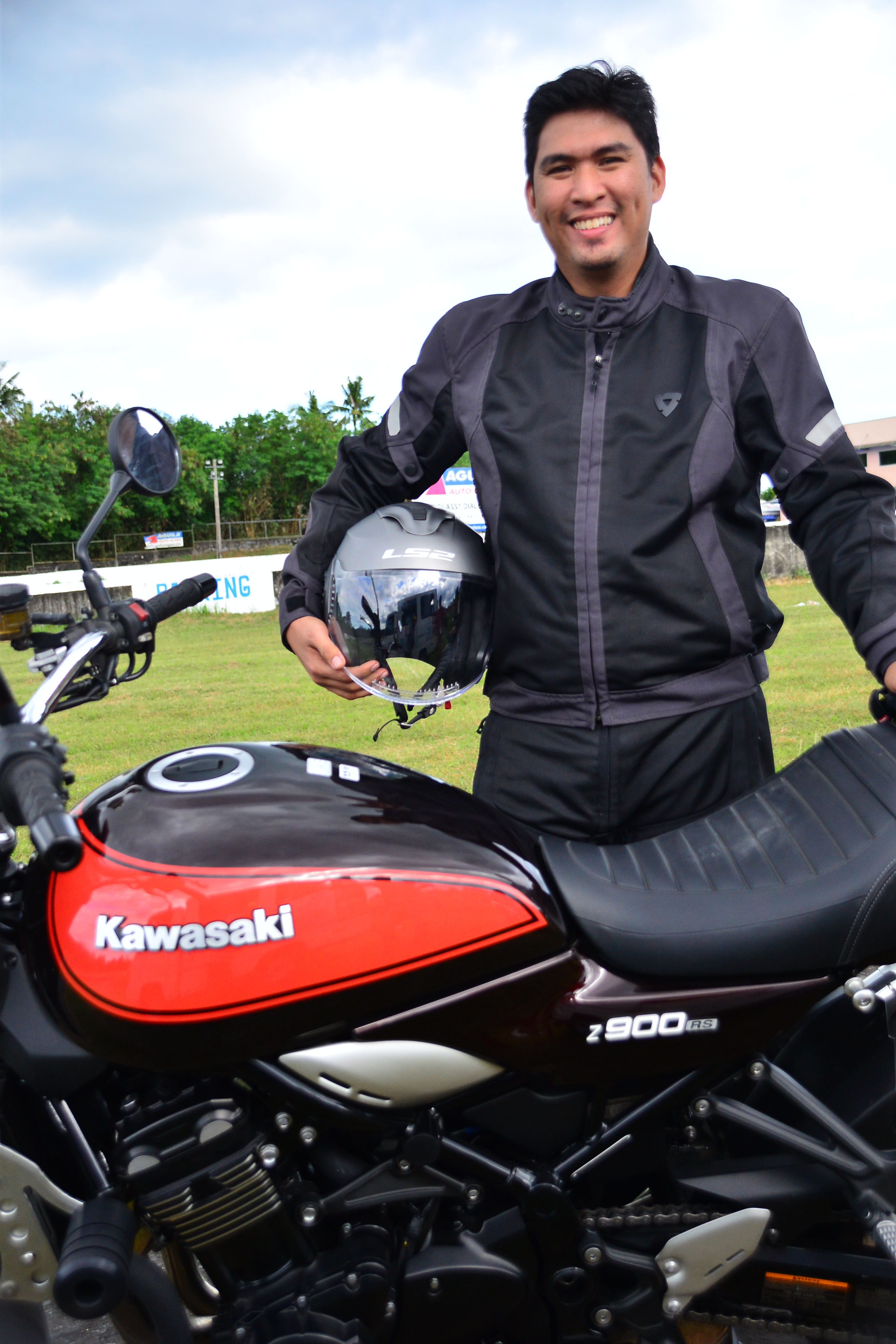
Philip Bonza “This model is a beautiful, classy, retro-styled superbike. Kawasaki is bringing us back to the 1970’s when the inline-four superbike was introduced. Now that the classic-styled bike is booming, this Z900 model is inspired from the Z1 of the ‘70s. It is a true modern classic bike. From all perspective I look at it, classic form and color are so pretty to my eyes. The huge teardrop shape fuel tank, round headlamp, ribbed style seat cushion and analogue style speed and tachometer are traditionally old style. It has of course the modern features for the 948cc inline-four engine. This classic-styled model has ABS (Antilock Braking System), riding modes, liquid-cooling & LED lighting. ABS might be a standard feature now but the riding modes surprised me when I clicked the buttons and checked what is in the small LCD screen on the instrument panel. Riding this model on the expressway is so easy for its power and relaxing upright riding position. A bit heavy when riding in the metro traffic but riding hours will be comfortable for everyday service. I really love the overall style of this model. Kawasaki gave more attention to details when they designed it – from the color and design of the tank, style of the cast wheels that look like wired spoke, fins on the cylinder head that look like air-cooled engine and the tail cowl borrowed from its older brother Z1 from the ‘70s era. Riding this cool retro gives me a more relaxed feel for its ergonomics and very good sound of the 4-into-1 muffler. This is my number 1 bike so far in the modern-classic class. A classic inline-four in the present world. This model offers a retro style and color in a modern and fresh engine. The huge fuel tank, round headlamp, rib style seat and color matched the superbike Kawasaki introduced back in the ‘70s.This Z900 model has up-to-date features.”
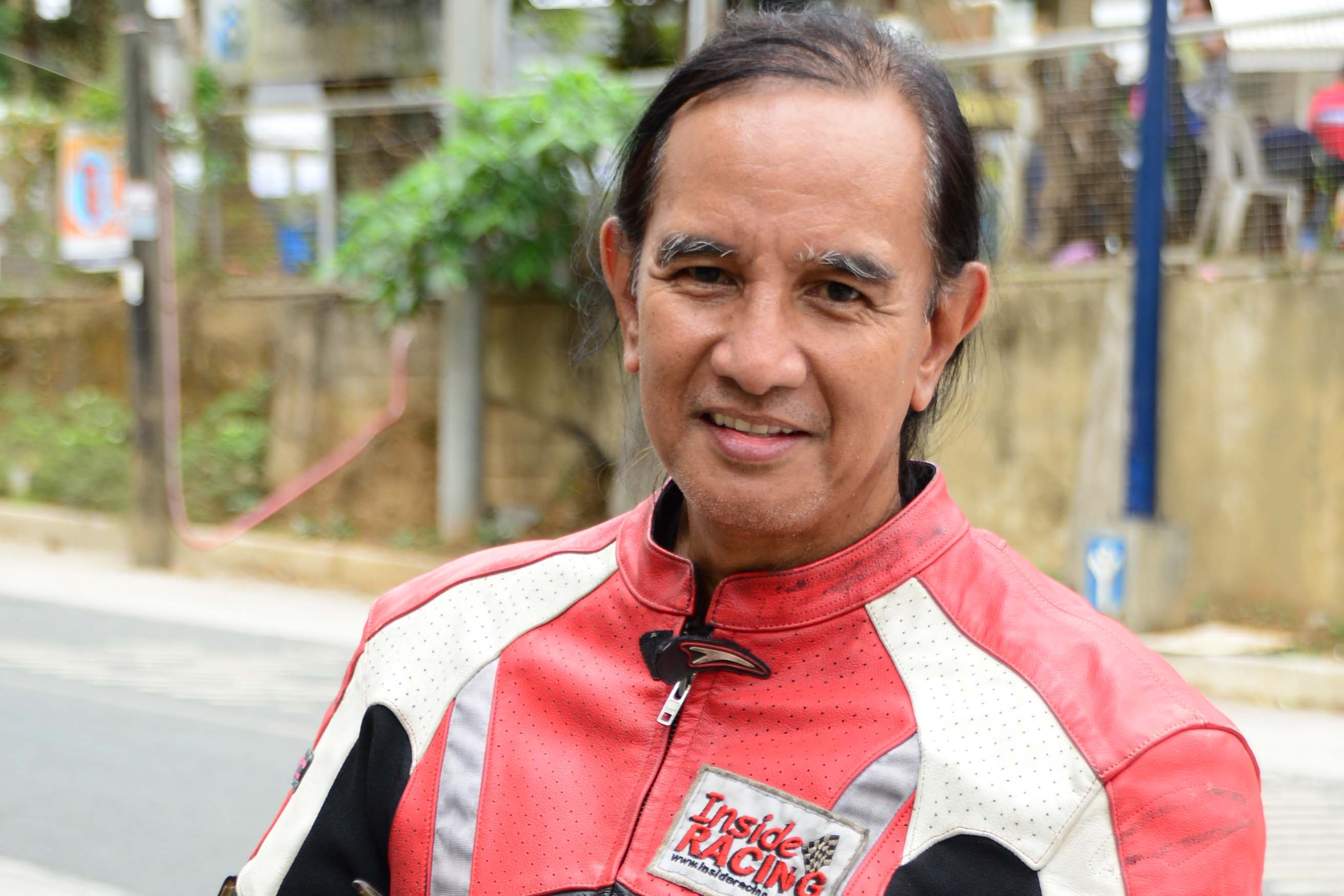
Ricci Abrina “The classic-looking Kawasaki Z900 is back! Now with modern and newer components, the styling of the all-new Kawasaki Z900RS is so retro, you’d feel like Tom Cruise in the Top Gun movie. The inline-four cylinder 900cc DOHC 16-valve engine delivers smooth and powerful thrusts during full acceleration. So smooth you can cruise 60KPH on 6th gear without the bucking feeling. The front and rear ABS brake system makes you feel safer riding around city and mountain passes. You also have an array of fully adjustable front and rear suspension while the seat is well padded for comfort in long hauls. The dual circular speedometer and tachometer are a blast from the past but with an infusion of a digital center gauge showing trip meters, odometer, gear position, fuel and temperature gauges. Then there is this huge round headlights with LED that turns night into day. It’s a standard retro naked motorcycle – so sexy, so cool and all so powerful with new dependable Kawasaki technology.”
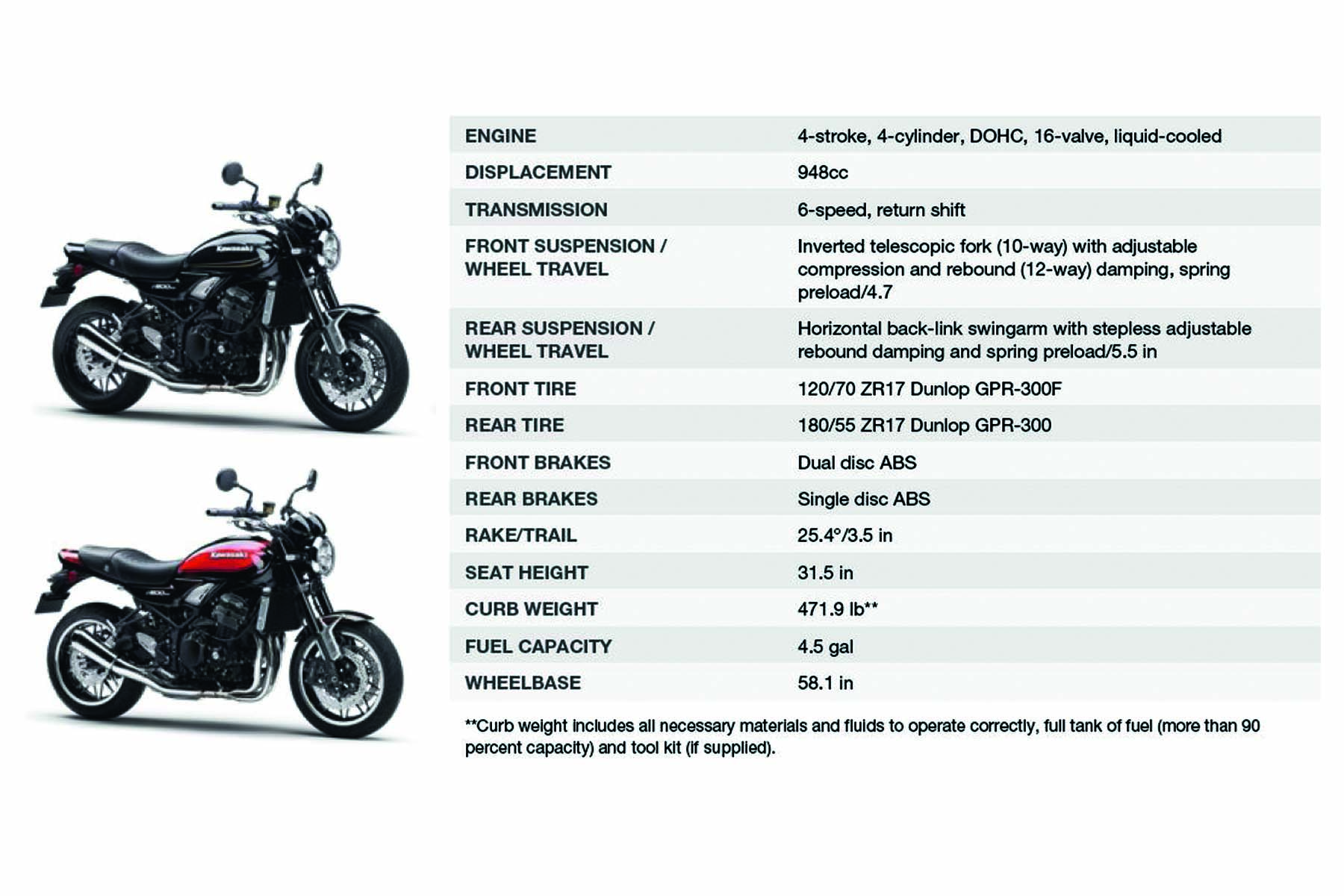
*This article was published in InsideRACING’s Volume 16 Number 7 issue July 2018.
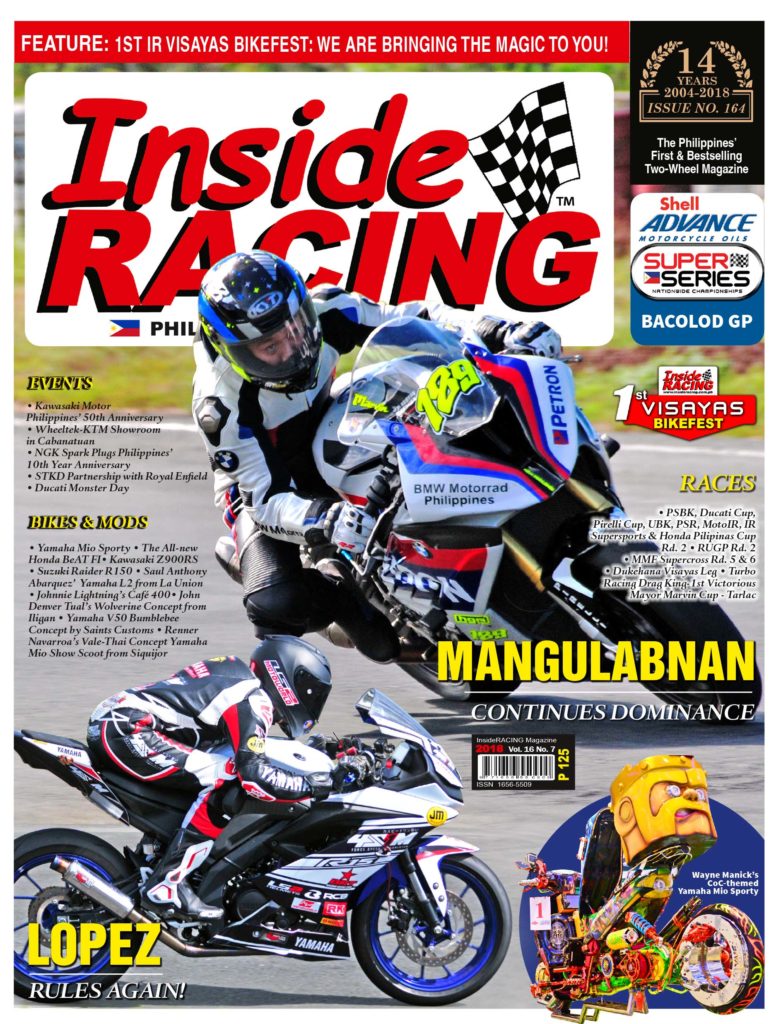
*This article was published in TORQUE issue 22
